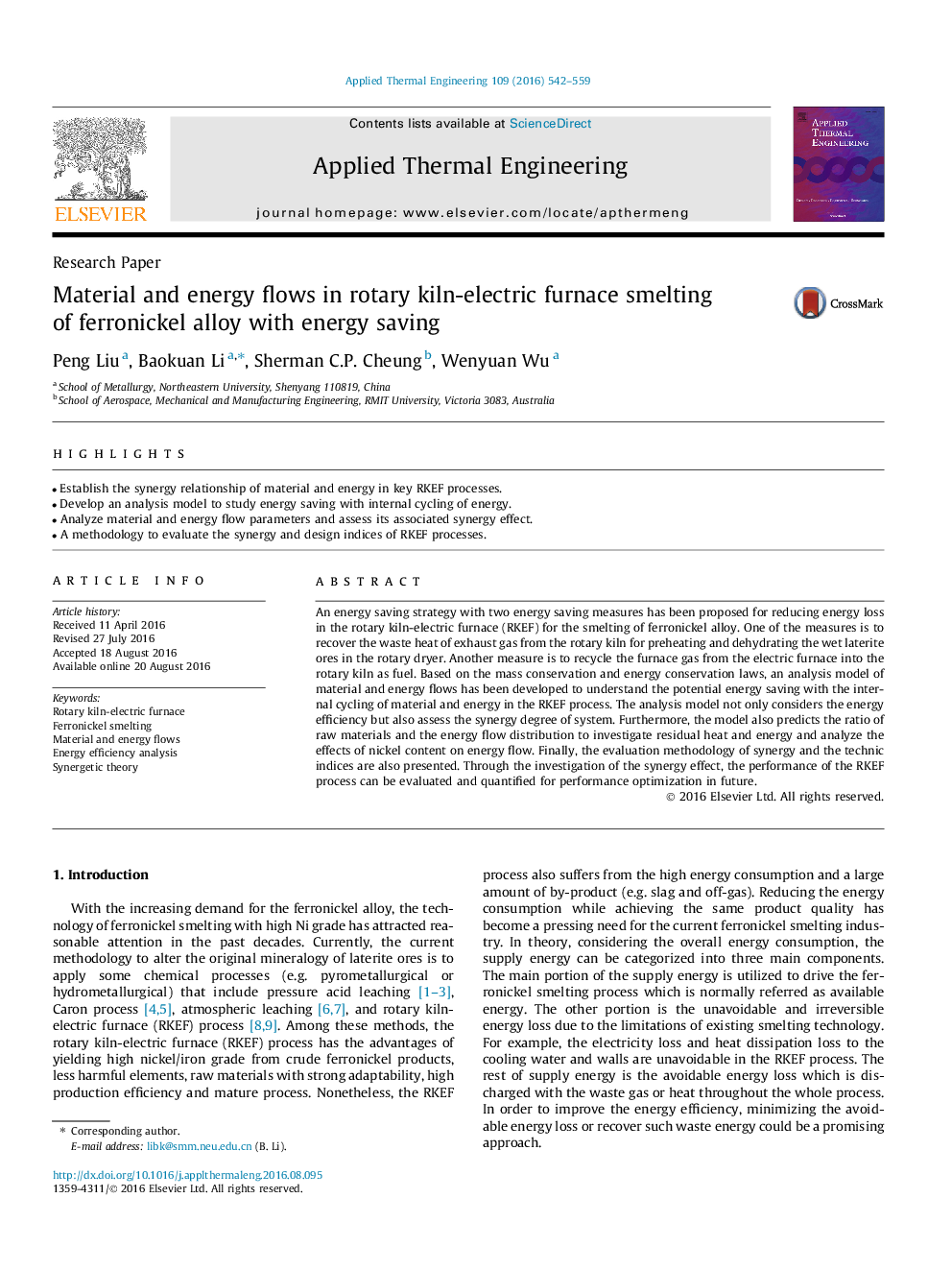| Article ID | Journal | Published Year | Pages | File Type |
|---|---|---|---|---|
| 6481181 | Applied Thermal Engineering | 2016 | 18 Pages |
â¢Establish the synergy relationship of material and energy in key RKEF processes.â¢Develop an analysis model to study energy saving with internal cycling of energy.â¢Analyze material and energy flow parameters and assess its associated synergy effect.â¢A methodology to evaluate the synergy and design indices of RKEF processes.
An energy saving strategy with two energy saving measures has been proposed for reducing energy loss in the rotary kiln-electric furnace (RKEF) for the smelting of ferronickel alloy. One of the measures is to recover the waste heat of exhaust gas from the rotary kiln for preheating and dehydrating the wet laterite ores in the rotary dryer. Another measure is to recycle the furnace gas from the electric furnace into the rotary kiln as fuel. Based on the mass conservation and energy conservation laws, an analysis model of material and energy flows has been developed to understand the potential energy saving with the internal cycling of material and energy in the RKEF process. The analysis model not only considers the energy efficiency but also assess the synergy degree of system. Furthermore, the model also predicts the ratio of raw materials and the energy flow distribution to investigate residual heat and energy and analyze the effects of nickel content on energy flow. Finally, the evaluation methodology of synergy and the technic indices are also presented. Through the investigation of the synergy effect, the performance of the RKEF process can be evaluated and quantified for performance optimization in future.
